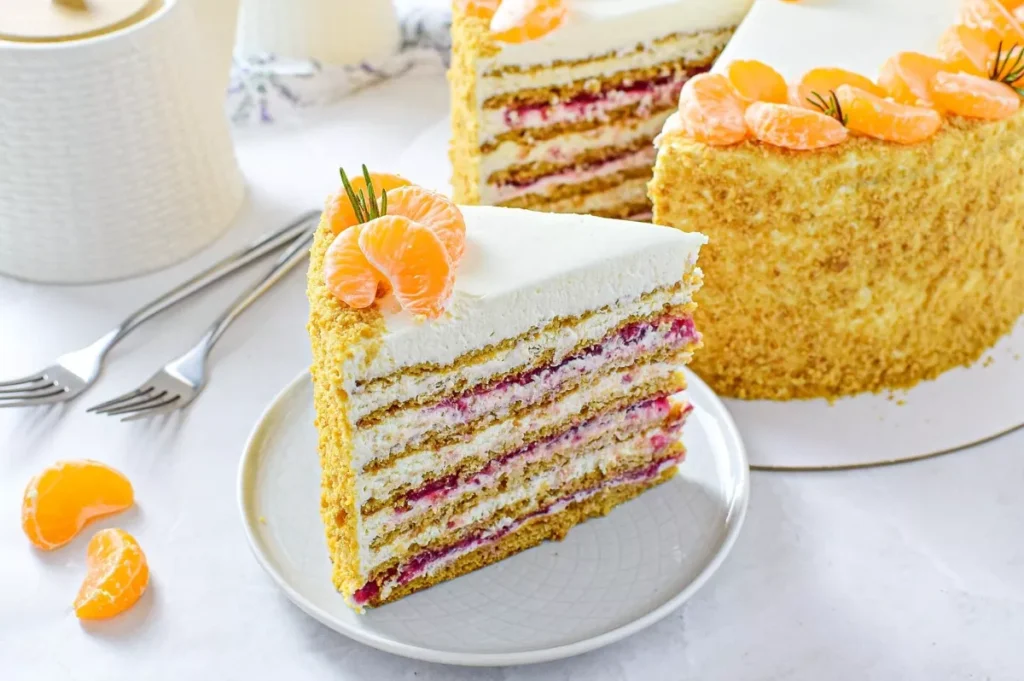The Origins of Honey Cakes
Honey cakes have graced tables across cultures for centuries, offering a sweet blend of history and flavor. Tracing their roots back to ancient Egypt and Greece, these confections were once considered sacred. In Jewish traditions, honey cakes are especially significant during Rosh Hashanah, symbolizing hope for a sweet new year. The simplicity of ingredients—flour, honey, eggs, and spices—allowed early civilizations to enjoy this treat long before refined sugar became common. These cakes weren’t just desserts; they were cultural staples passed down through generations, evolving over time while retaining their symbolic sweetness medaus tortas.
Varieties Across the Globe
Around the world, honey cakes take on various forms, flavors, and traditions. In Germany, you’ll find Lebkuchen, often enjoyed during the holiday season and made with spices like cinnamon, cloves, and nutmeg. In Russia, Medovik is a layered honey cake with creamy fillings, offering a melt-in-the-mouth experience. Middle Eastern variations incorporate nuts, orange blossom water, or cardamom, creating aromatic delights with deep cultural connections. Even in Asia, local adaptations use honey and rice flour or sticky rice to create chewy, subtly sweet versions of honey cakes. Each region adds its own twist, making this dessert a true global delicacy.
Key Ingredients that Define Honey Cakes
At the heart of all honey cakes is, of course, honey. The type of honey used—acacia, clover, wildflower, or manuka—can dramatically influence the flavor. Flour provides structure, while eggs contribute richness and stability. Common additions include spices like cinnamon, ginger, or cloves to enhance aroma and depth. Some recipes use coffee, tea, or citrus juice to balance the sweetness. Nuts like walnuts or almonds add texture and flavor complexity. Oil or butter gives a moist crumb, and sometimes yogurt or sour cream is included to soften the texture. This combination of simple yet powerful ingredients is what makes honey cakes enduringly popular.
Baking Techniques for Perfect Honey Cakes
Achieving the ideal texture in honey cakes requires a few essential techniques. First, always allow the honey to blend thoroughly with wet ingredients—this can be done by gently warming the honey to make it more fluid. Sifting the dry ingredients ensures a light and even batter. When mixing, don’t overwork the batter, as this can lead to a tough cake. Low and slow baking is preferred; it helps preserve the moisture that honey imparts. Cooling the cake completely before slicing allows flavors to deepen. Some traditional recipes recommend letting the cake rest for a day or two to enhance its richness.
Honey Cakes for Every Occasion
Honey cakes are incredibly versatile and suitable for a variety of occasions. For religious and cultural celebrations such as Rosh Hashanah or Christmas, spiced honey cakes symbolize joy and blessings. For birthdays or anniversaries, layered versions with cream fillings make a luxurious centerpiece. Mini honey cakes or cupcakes are perfect for afternoon teas and brunches, offering elegant individual servings. For weddings, honey cakes wrapped in delicate fondant or adorned with edible flowers offer a beautiful and meaningful dessert option. Even casual weeknight dinners can be sweetened with a simple honey cake served with a dollop of whipped cream or a scoop of vanilla ice cream.
Modern Twists on Traditional Honey Cakes
While the classic versions hold nostalgic value, modern bakers are constantly reimagining honey cakes with inventive twists. Gluten-free versions using almond flour or coconut flour cater to dietary restrictions without compromising flavor. Vegan honey cakes swap eggs for flaxseed or applesauce and use plant-based honey alternatives. Infused honeys—like lavender or rosemary—add gourmet flair. Chocolate honey cakes, layered with ganache, bridge the gap between traditional and decadent. Some chefs incorporate seasonal fruits like pears, figs, or apples, offering freshness and a juicy bite. These modern adaptations keep honey cakes relevant and exciting in today’s culinary scene.
Pairing and Serving Ideas
Pairing honey cakes with the right beverages or accompaniments can elevate the overall experience. A spiced honey cake pairs beautifully with black tea, chai, or mulled wine, enhancing its warm, cozy flavors. A lighter citrus-honey cake complements green tea or sparkling wine. Add whipped cream, crème fraîche, or mascarpone cheese for creamy contrast. Serve honey cakes with a drizzle of extra honey or a dusting of powdered sugar for visual appeal. Toasted nuts or caramelized fruit toppings can add extra texture. These small enhancements make honey cakes even more inviting and suitable for gourmet presentations.
Health Benefits of Honey in Baking
Beyond their deliciousness, honey cakes also offer some health advantages thanks to their primary ingredient. Honey is a natural sweetener rich in antioxidants, enzymes, and trace nutrients. It has antibacterial properties and can help soothe the throat or aid digestion. Unlike refined sugar, honey has a lower glycemic index, making it a slightly better option for blood sugar control when consumed in moderation. Its natural moisture-retaining qualities also mean that honey cakes often stay fresher longer without needing preservatives. While they’re still treats, honey cakes are a more wholesome indulgence compared to many processed desserts.
Tips for Storing and Preserving Freshness
Honey cakes are known for their shelf life, particularly the denser versions. To keep your honey cakes moist and flavorful, store them in an airtight container at room temperature for up to five days. For longer storage, refrigerate them—just be sure to bring them to room temperature before serving to revive their soft texture. You can also freeze honey cakes for up to three months by wrapping them tightly in plastic and foil. When reheating, use a low-temperature oven to gently warm the cake. These methods help maintain the quality and flavor of your homemade or store-bought honey cakes.
Why Honey Cakes Endure
The charm of honey cakes lies in their beautiful balance of simplicity and richness. They transcend trends and fads, offering comfort and nostalgia while still being open to creative reinvention. Whether you’re baking for a family gathering, a festive celebration, or just to satisfy a sweet craving, honey cakes provide warmth and delight in every bite. Their enduring popularity across cultures and generations is a testament to their universal appeal. With their fragrant aroma, moist crumb, and meaningful history, honey cakes continue to be a beloved treat around the world.

